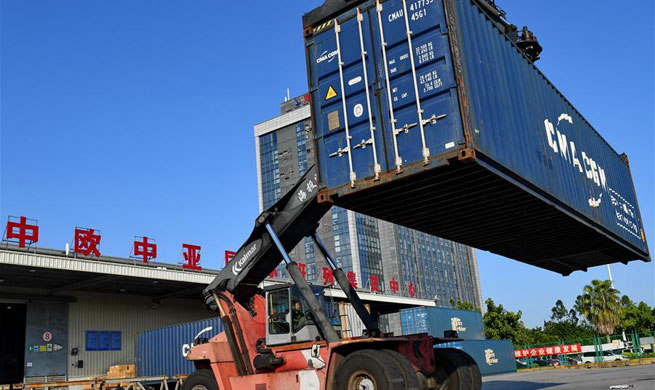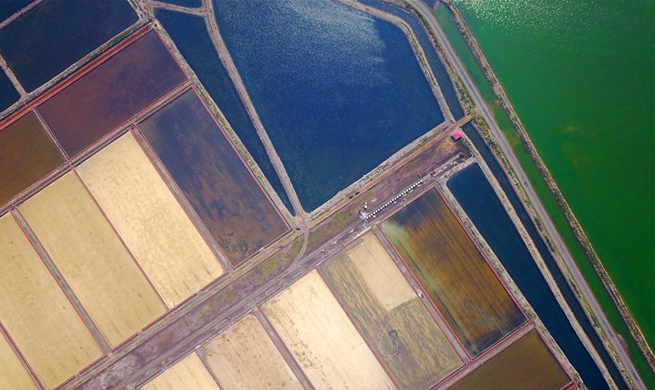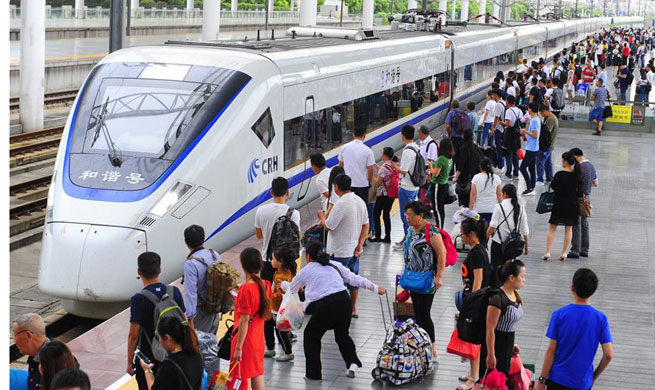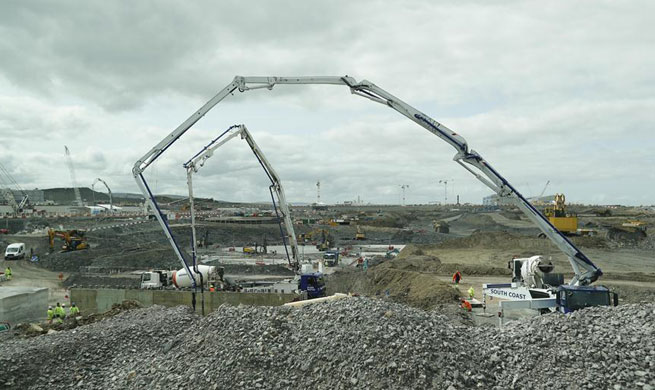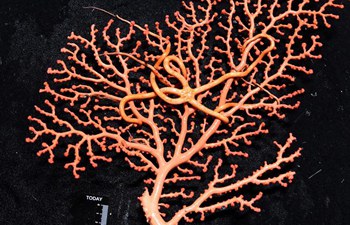BEIJING, Aug. 31 (Xinhua) -- Tianjian, a multi-function cargo ship, loaded with over 36,000 tonnes of machinery, set off from east China's Lianyungang Thursday.
Carrying tunneling machines bound for Russia to be used in subway construction work and wind power equipment heading for Denmark, Tianjian is the third of China's planned six cargo ships to ply the northern route to Europe in 2017.
In June, China proposed three "blue economic passages" connecting Asia with other continents, including this one linking with Europe via the Arctic Ocean as part of the Belt and Road Initiative.
In early July, Chinese President Xi Jinping and Russian Prime Minister Dmitry Medvedev agreed to explore cooperation on the northern sea route and build a "Silk Road on Ice."
The advantages of the Arctic passage are obvious.
"The passage is shorter, takes less time and the seaway is comparatively empty," said Shen Jianxin, captain of the Tianjian. "We don't have to worry about pirates either."
Tianjian will reach the port in Esbjerg, Denmark, 7,670 nautical miles away, after 25 days. By conventional route, via the Suez canal, the voyage takes 37 days, covering 11,060 nautical miles. In other words, the arctic passage uses 320 tonnes less fuel, saving more than 1,000 tonnes of CO2.
"The arctic passage expands China's options, and provides customers with faster delivery," said Yu Zenggang, vice general manager of China Cosco Shipping, which manages Tianjian.
For some years, Cosco has been exploring the potential of the arctic passage. By the end of 2016, nine voyages had been completed.
According to Cai Meijiang, vice president of a specialist carrier affiliated to Cosco, canal and security costs are also cut via the northern route, and ships need not be concerned by monsoons on the Indian Ocean.
"Over 90 percent of China's exports travel by sea," said Lin Shanqing, deputy head of the State Oceanic Administration. "The opening up of the arctic maritime passage means a lot to China."
As the sea ice in the Arctic Ocean continues to recede, the shipping period along the passage is lengthening. And with improved technology, the northern route will make a big difference to the world trade structure, he continued.
However, there are still plenty of obstacles to be overcome before the arctic passage becomes a regular choice.
"Sea ice, polar days and nights and complex weather conditions are among the challenges both we and the ship have to face," said captain Shen. "Rescue facilities along the route are also limited."
Cai agreed. "If there is an accident, rescue is much more difficult in the Arctic area," he said.
As a counter measure, Cosco has rewritten operational manuals for crews that are bound for the Arctic, and made thorough checks of all ships involved.










